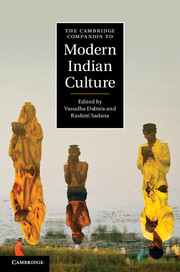4 - Urban forms of religious practice
from Part I - Cultural contexts
Published online by Cambridge University Press: 28 May 2012
Summary
Driving in eastern Bangalore beyond the Intermediate Ring Road, I pass a roadside temple dedicated to Shiva and his holy family; it is guarding the entrance to the old village from which Marathahalli Road, the local name for Airport Road in this area, derives its name. While the road has become more congested, and the village has been incorporated into the city, the temple has nevertheless been embellished over the last three decades, most recently with a new coat of paint and a patio marking its perimeter. Further down Airport Road's intersection with the Outer Ring Road near Brookefields, a banner advertises the ritual consecration of a large new temple dedicated to Shirdi Sai Baba, a relatively modern holy figure. Indian cityscapes have long made space for the celebration of ‘the sacred’ or ‘the religious’ in a wide array of forms, and public life itself is interlaced with religiosity in at least three significant ways.
First, there has been a proliferation of new temples, religious buildings and altars of various scales and genealogies. These include fixed ones such as roadside temples, vernacular shrines in market places, taxi stands, exterior walls of homes, or within the courtyards of apartment complexes. In urban Goa, wayside shrines alter the centuries-old religion of Goan Hindus and Catholics by allowing devotees to worship saints and deities outside what might have been their own parochial religious associations. On a grander spatial scale, there is also the model of ‘the religious campus’.
- Type
- Chapter
- Information
- The Cambridge Companion to Modern Indian Culture , pp. 67 - 79Publisher: Cambridge University PressPrint publication year: 2012
- 1
- Cited by



